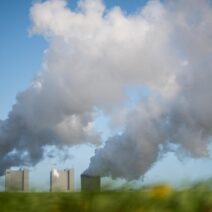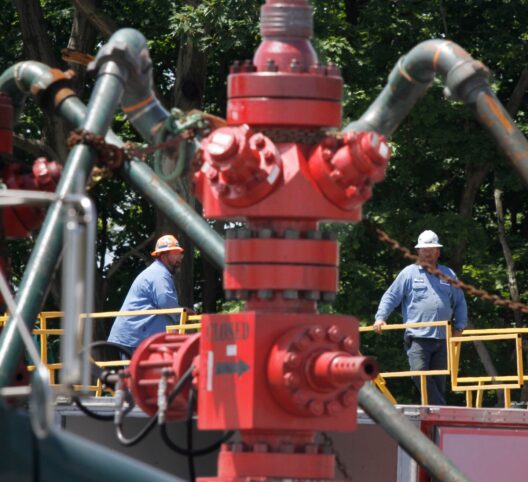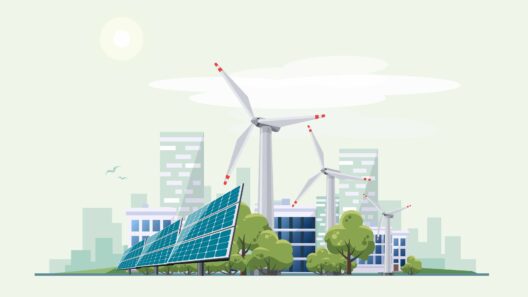Water, an omnipresent element crucial for sustaining life, also serves as a potent source of energy. Hydroelectric power, often described as the sleeping giant of renewable energy, harnesses the kinetic energy of flowing water to generate electricity. However, the increasing demand for power threatens this vital resource. To ensure the longevity of hydro and hydroelectric energy, it is essential to adopt strategies that align with sustainability. Just as rivers carve their paths through diverse landscapes, our approach to conserving hydro energy must adapt and flow harmoniously with the environment.
Understanding the mechanics of hydroelectric energy is fundamental. In essence, hydroelectric power plants convert the energy of flowing water into usable electricity. This process typically involves the creation of a dam or a diversion structure that alters the natural flow of water. As water flows through turbines, its kinetic energy is transformed into mechanical energy, subsequently converted into electrical energy. Nevertheless, the damming of rivers can have irreversible impacts on ecosystems, which poses implications for conservation efforts.
To cultivate a sustainable relationship with hydroelectric energy, recognizing various conservation strategies is essential. Primarily, embracing the concept of “small is beautiful” can significantly contribute to hydro conservation. Small-scale hydroelectric systems, often called micro-hydro systems, can harness energy from minor water flows without necessitating extensive infrastructure. These systems offer localized solutions, mitigating environmental disruption while providing communities with a renewable energy source. As we embark on this journey, we must remember that even the gentle trickle of a stream can fuel remarkable change.
Furthermore, protecting and rehabilitating watersheds where hydroelectric facilities operate is paramount. Water bodies must be safeguarded from pollution and degradation to maintain their flow and quality. This can be achieved through stringent regulations and community advocacy that prioritize clean water sources. Conservation advocates should work to implement comprehensive watershed management plans that restore riparian buffers and reforest riverbanks. By nurturing the land surrounding waterways, we not only preserve natural habitats but also enhance the efficiency of hydroelectric energy generation.
Additionally, incorporating innovative technologies can enhance the efficiency and sustainability of hydroelectric systems. Advanced turbine designs, for instance, can optimize energy extraction while reducing ecological disturbances. These modern turbines can accommodate varying flow rates, adapting to changing conditions without compromising energy output. Similarly, real-time monitoring systems utilize data analytics to optimize water management practices, ensuring that both energy generation and environmental preservation occur in tandem. By embracing such technologies, we foster resilience within hydroelectric systems, allowing them to thrive in an ever-changing climate.
Public awareness is another pivotal aspect of hydro energy conservation. Communities must be educated about the importance of preserving their water resources and the role hydroelectricity plays in the global energy landscape. Engaging local populations through workshops and public forums fosters a sense of ownership and responsibility to protect waterways. Moreover, transparent communication of the benefits and drawbacks of hydroelectric projects can enable citizens to make informed decisions regarding their energy needs. Education is a river, ceaselessly flowing and shaping the landscapes of knowledge across generations.
One cannot discuss hydroelectric energy without acknowledging the potential of alternative Energy options. While the focus remains on maximizing hydroelectric output, it is crucial to explore synergy with other renewable sources. Solar panels, for instance, can complement hydroelectric systems. By forging multi-faceted energy solutions, communities can enhance resilience in the face of droughts or changing water availability. This integration allows us to diversify our energy portfolios, ensuring that the cessation of one resource does not lead to a drought of energy.
Economically speaking, investing in hydro energy conservation is an astute endeavor. Hydro projects often entail high operational and maintenance costs as well as potential environmental mitigation expenses. Implementing sustainable practices minimizes these costs over time; this translates to reduced financial burdens for both utilities and consumers. Furthermore, the economic ripple effect of sustainable hydro projects can stimulate local economies by creating jobs and enhancing energy security. The synergy between sustainability and economic viability transforms the narrative from mere resource extraction to responsible stewardship.
In conclusion, conserving hydro and hydroelectric energy requires a multifaceted approach, harnessing community engagement, technological innovation, and adaptive strategies. As we continue to navigate the complexities of energy production in the face of climate change, it is imperative to respect and protect the delicate balance of our ecosystems. By empowering each river to flow freely, we ensure that hydroelectric energy remains a vibrant source for generations to come. Water teaches us resilience; it shapes landscapes, adapts to the terrain, and carves new pathways. In our quest for sustainability, may we, too, learn to flow with nature, conserving the precious resource that is hydro energy.





